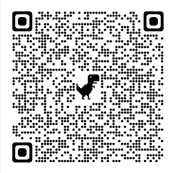Atopic Dermatitis Provider Resources Now Available
State of the Art Pediatrics: January 2024
Column Author: Rebecca Flynn, Advanced Practice RN III | Division of Dermatology
Column Editor: Amita R. Amonker, MD, FAAP | Assistant Professor of Pediatrics, University of Missouri-Kansas City School of Medicine; Clinical Assistant Professor of Pediatrics, University of Kansas School of Medicine
Atopic dermatitis affects 1 in 10 Americans, and up to 20% of children. This chronic skin disease can range from mild involvement requiring only moisturizers to significant life-altering disruptions requiring treatment with numerous prescriptions. Many families grow frustrated with this relentless disease, causing some providers to feel helpless in providing relief to these patients and families. Most families seek initial care with their primary care provider, who can begin by advising good skin hygiene, moisturizers, initial topical prescription medications, and avoidance of irritating agents. Often, patients request a dermatology evaluation to further aid management of their atopic dermatitis. While the Dermatology clinic is available and ready, most families want information during their initial visit with their primary care provider.
Children’s Mercy has developed an online care process management (CPM) plan to assist with management of both non-infected and infected atopic dermatitis. These interactive online modules provide information regarding initial management of atopic dermatitis, recommendations for dealing with atopic dermatitis skin flares, and guidelines for treating infected atopic dermatitis. These modules have been available online since 2020 but remain underused.
To bring knowledge of atopic dermatitis to the fingertips of the primary care provider, Children’s Mercy recently published an atopic dermatitis module in the Children’s Mercy PedsGuide app. This newly released module now brings all the information from the online Atopic Dermatitis CPM plan to the smartphone in the provider’s pocket. Not only is management information available, but the newly added module will additionally screen your infected patient for differential diagnoses including eczema herpeticum, eczema coxsackium and bacterially infected atopic dermatitis. Once the provider consults the Children’s Mercy PedsGuide app, the patient’s symptoms can be analyzed to provide a possible differential diagnosis and instant recommendations for management of the specific infection. Additionally, photos are available for visual comparison of atopic dermatitis severity and visualization of viral or bacterial infected atopic dermatitis.
If infection is not a concern and the patient is simply experiencing an atopic dermatitis flare, recommendations for treatment are also available. Topical steroid classifications are provided to evaluate the strength of topical steroids, and the provider can increase drug potency, if indicated, to better manage the skin flare. Additional tools to manage skin flare include a recipe for bleach baths and a video of how to apply wet wraps when needed. Many parents and providers ask which skin care products are best for eczema prone skin. The same recommendations provided in the Children’s Mercy Dermatology department are additionally included in the PedsGuide app so the primary care provider can offer the same information that the family will receive during their first visit with the dermatology clinic.
Since the U.S. Food and Drug Administration approval of dupilumab (Dupixent) therapy for children with moderate-to-severe atopic dermatitis in 2020, the most severe cases have been better managed using new biologic medications. However, many patients still need traditional care in partnership with the child’s primary care provider. Even using optimal atopic dermatitis care plans, skin infections can still occur. If your patient has a skin flare or possible skin infection, consider using the new atopic dermatitis module within Children’s Mercy PedsGuide app to provide the best possible care before referring to the Children’s Mercy Dermatology clinic.
Online CPM:

PedsGuide app:

PedsGuide: Pediatric Decision Support mobile app. Version 2.3.0. Children’s Mercy Hospital. 2022. App Store.
References:
- Eichenfield LF, Tom WL, Chamlin SL, et al. Guidelines of care for the management of atopic dermatitis: section 1. Diagnosis and assessment of atopic dermatitis. J Am Acad Dermatol. 2014;70(2):338-351. doi:10.1016/j.jaad.2013.10.010
- Eichenfield LF, Tom WL, Berger TG, et al. Guidelines of care for the management of atopic dermatitis: section 2. Management and treatment of atopic dermatitis with topical therapies. J Am Acad Dermatol. 2014;71(1):116-132. doi:10.1016/j.jaad.2014.03.023
- Flynn R, Scott E. Atopic dermatitis - infected: care process model. Last updated August 12, 2020. https://www.childrensmercy.org/siteassets/media-documents-for-depts-section/documents-for-health-care-providers/evidence-based-practice/clinical-practice-guidelines--care-process-models/atopic-dermatitis-infected.pdf
- Flynn R, Scott E. Atopic dermatitis - noninfected: care process model. Last updated August 12, 2020. https://www.childrensmercy.org/siteassets/media-documents-for-depts-section/documents-for-health-care-providers/evidence-based-practice/clinical-practice-guidelines--care-process-models/atopic-dermatitis-noninfected.pdf
- Flynn R, Scott E. Atopic Dermatitis: A Visual Guide to Diagnosis Severity. 2020. https://www.childrensmercy.org/siteassets/media-documents-for-depts-section/documents-for-health-care-providers/evidence-based-practice/clinical-practice-guidelines--care-process-models/atopic-dermatitis-severity-guide.pdf
- Paller AS, Siegfried EC, Thaci D, et al. Efficacy and safety of dupilumab with concomitant topical corticosteroids in children 6-11 years old with severe atopic dermatitis: a randomized, double-blinded, placebo-controlled phase 3 trial. J Am Acad Dermatol. 2020;83(5):1282-1293. doi:10.1016/j.jaad.2020.06.054.
- Dupixent U.S. healthcare professionals website. Sanofi & Regeneron Pharmaceuticals. 2023. www.Dupixenthcp.com
